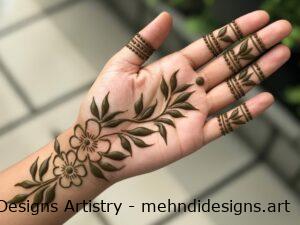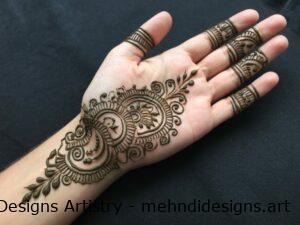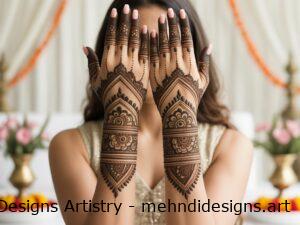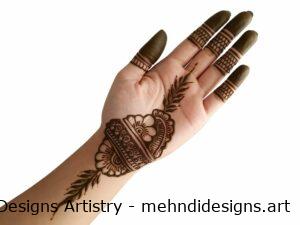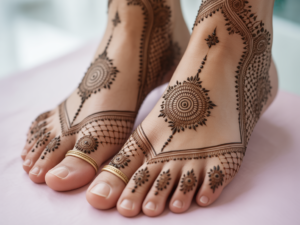Mehndi, or henna, is an ancient art form that has been celebrated for centuries. From wedding rituals in India to festivals in North Africa and the Middle East, Mehndi is loved for its beauty, symbolism, and cultural significance.
But did you know that some types of henna can cause allergic reactions? In particular, black henna has been linked to skin irritation, blisters, and even permanent scars.
In this post, we’ll walk you through the symptoms of Mehndi allergies, explain why they happen, and show you how to prevent them—so you can enjoy this beautiful tradition safely.
What Is Mehndi and Why Can It Cause Allergies?
🌿 Mehndi is made from the powdered leaves of the henna plant (Lawsonia inermis). When mixed with water, lemon juice, or essential oils, it creates a paste that stains the skin a reddish-brown color.
Natural henna is generally safe for most people. However, allergic reactions can still happen—especially when the paste contains added chemicals or when it’s applied to sensitive skin.
The human immune system sometimes sees unfamiliar substances as threats. This leads to an allergic response such as itching, redness, or swelling. These reactions are more common with chemical-laced henna, especially the kind marketed as “black henna.”
Common Symptoms of Henna Allergies
⚠️ If your skin reacts to henna, symptoms may appear within hours or even days. They include:
-
Itching or burning
-
Redness and swelling
-
Rash or raised bumps
-
Skin peeling or dryness
-
Painful blisters
-
In rare cases: fever or difficulty breathing
Some reactions are mild and go away on their own, but black henna allergies can be much more severe. That’s why understanding what’s in your henna matters.
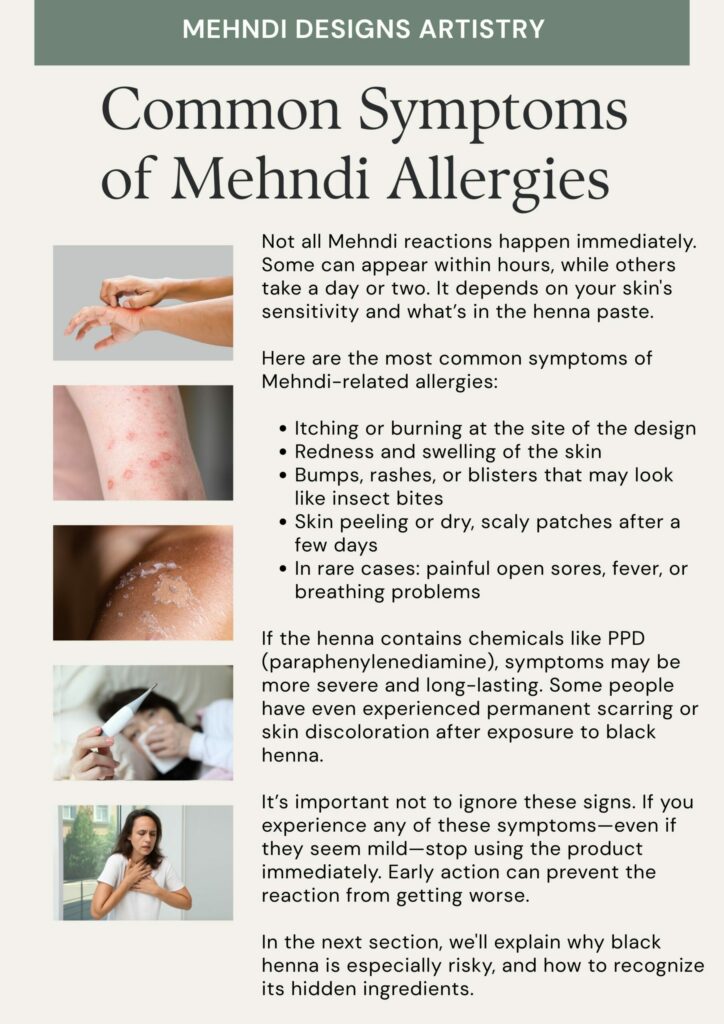
The Truth About Black Henna and PPD
🧪 Black henna often contains a synthetic dye called PPD (paraphenylenediamine). This chemical is used in hair dye to create a darker, longer-lasting color—and some sellers add it to henna to produce a jet-black stain within just a few hours.
Sounds great? Not really.
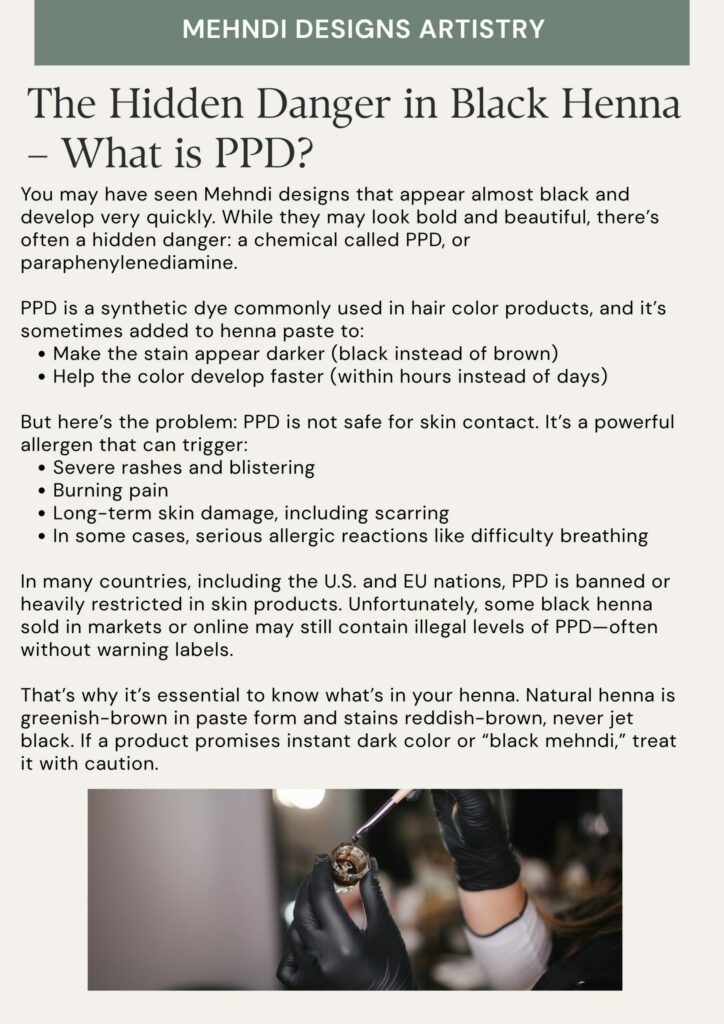
PPD is not safe for skin use. It’s a powerful allergen and can cause:
-
Severe rashes and skin burns
-
Permanent discoloration or scars
-
Allergic reactions requiring medical treatment
In many countries, PPD in skin products is banned or strictly regulated. But it still appears in some henna products, especially unregulated ones sold online or in tourist markets.
So, how do you avoid it?
How to Choose Safe Henna Products
✅ Here’s how to tell the difference between natural henna and unsafe or black henna:
Look for:
-
Green or olive-colored paste
-
A mild, earthy smell (like dried leaves or tea)
-
Simple ingredients: henna powder, lemon juice, essential oils
Avoid:
-
Black or very dark brown paste
-
Products labeled “instant stain” or “black mehndi”
-
Long, complicated ingredient lists or no list at all
-
Chemical or perfume-like smell
Buy from trusted sources, such as natural beauty brands or professional Mehndi artists who make their own paste.
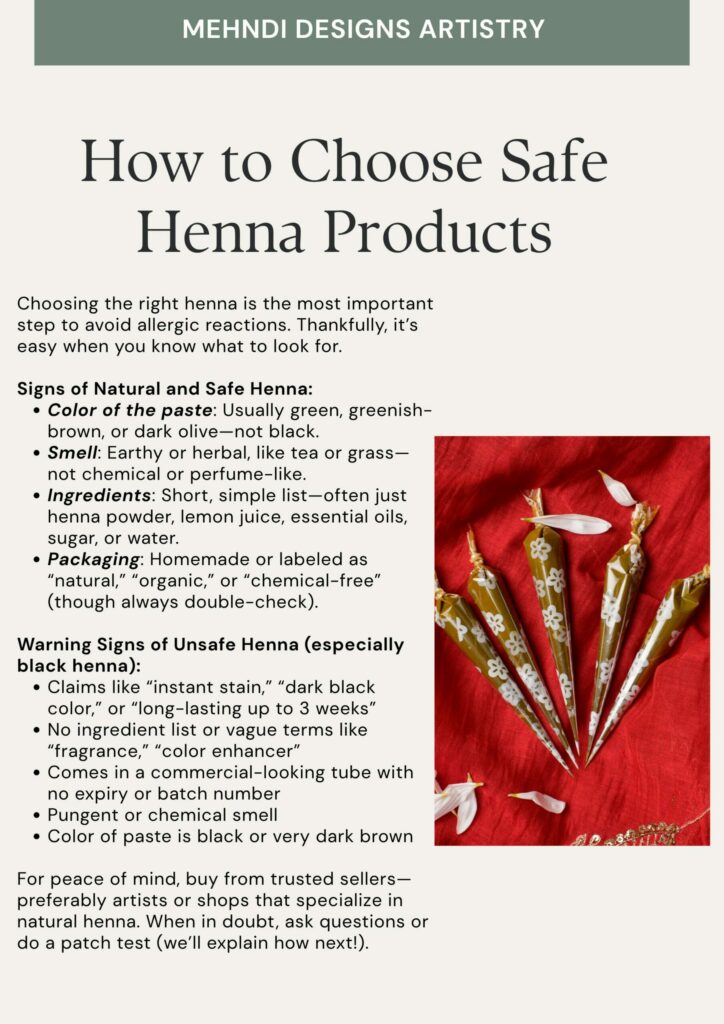
Always Do a Patch Test
🧴 Even with natural henna, it’s wise to test for allergies first—especially if you have sensitive skin.
Here’s how:
-
Apply a small amount of henna paste on your inner arm.
-
Let it dry and leave it on for at least 2–4 hours.
-
Rinse or wipe it off gently.
-
Wait 24–48 hours to see if any irritation appears.
If your skin stays calm—great! If you see redness, swelling, or itchiness, don’t use that henna on larger areas.
What to Do If You Have a Reaction
🆘 If you notice symptoms of an allergic reaction after using henna:
-
Remove it immediately with gentle soap and cool water.
-
Apply aloe vera gel or cold compresses to reduce inflammation.
-
Use over-the-counter creams like hydrocortisone if the irritation is stronger.
-
Seek medical help if you develop blisters, extreme swelling, or have trouble breathing.
Never ignore allergic symptoms, even if they seem minor—early care can prevent complications.
Henna Safety Tips for Children
🧒Young children have more delicate skin and are more likely to react to harsh chemicals. For this reason:
-
Avoid using black henna on kids
-
Stick to natural henna in small amounts
-
Always do a patch test—even for children
Final Safety Checklist
✅ Before applying any henna, ask yourself:
-
Does the paste look greenish-brown (not black)?
-
Does it smell natural?
-
Are the ingredients clearly listed and chemical-free?
-
Did I do a patch test?
-
Am I applying it to healthy skin?
If you answered “yes” to all, you’re on the safe side!
Mehndi should be a joyful and meaningful part of your beauty routine—not something that leaves you with scars or pain. By understanding the risks of black henna, checking ingredients carefully, and following a few simple safety steps, you can enjoy Mehndi without worry.
Let’s keep this ancient art form beautiful—and safe—for everyone.
💌 Want to Learn More?
Download our free ebook:
“Mehndi Allergies: Symptoms and How to Prevent Them”
👉 Get expert tips, DIY advice, and safety infographics all in one guide.
Now that you know how to apply henna safely, why not make the most of your design? Check out our guide on how to make your Mehndi stain darker and longer-lasting for tips that every henna lover should know.

